As dedicated revolver enthusiasts, your RevolverGuy team occupies a unique position in the industry. There are very few individuals and groups out there with such a concentrated focus on revolvers, and that’s afforded us some unique opportunities to work with manufacturers on product improvements and new ideas. One recent project that we were proud to play a small role in was the development of the new FLETC 2.0 holster from DeSantis. Your RevolverGuy team was happy to work with the craftsmen at DeSantis to introduce and test this new design, and we’d like to tell you a bit about it. But first, we need to look back at the roots of this holster.
COWBOYS, SOLDIERS, AND LAWMEN
From the very beginning of the metallic cartridge era, RevolverGuys have been trying to find a good way to carry spare ammunition for their wheelguns.
The cowboys of the late 1800s and early 1900s favored cartridge loops sewn into their leather belts, and the military played with these too, but eventually trended towards pouches for their reloads—sometimes made of leather, other times of canvas, depending on the application—as the years wore on.
The late 19th and 20th Centuries marked the heyday of revolver use by police in America, and in the early years a lot of cops didn’t carry spare ammunition at all. In the major eastern and midwestern cities, a lot of uniformed coppers in the newly-formed police departments carried revolvers in tunic pockets—and often without authorization. It’s a safe bet that most of these .32s and .38s lacked a reload.
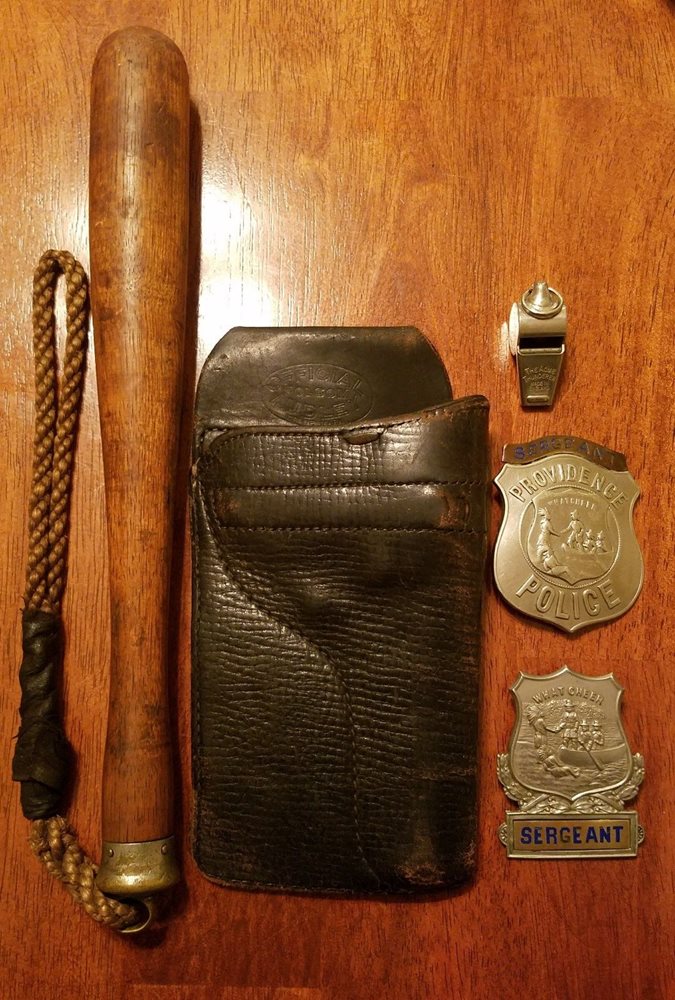
Over time though, those agencies took their cues from their western and southern brothers and the guns migrated to belts, where they were openly carried as part of the uniform, and the practice of carrying at least one reload became common practice. By the post-World War II era, it was standard practice for a uniformed patrol officer to carry two reloads for the six-shot revolver, setting up a pattern that still continues today in the age of the self-chucker.
But coppers who worked in “soft clothes” (like detectives, investigators, and undercovers) or who were armed off duty were much less likely to carry reloads for their guns (some things never change). When they did, it was frequently because department policies required them to, and most only carried a single reload, per accepted standards of the day.
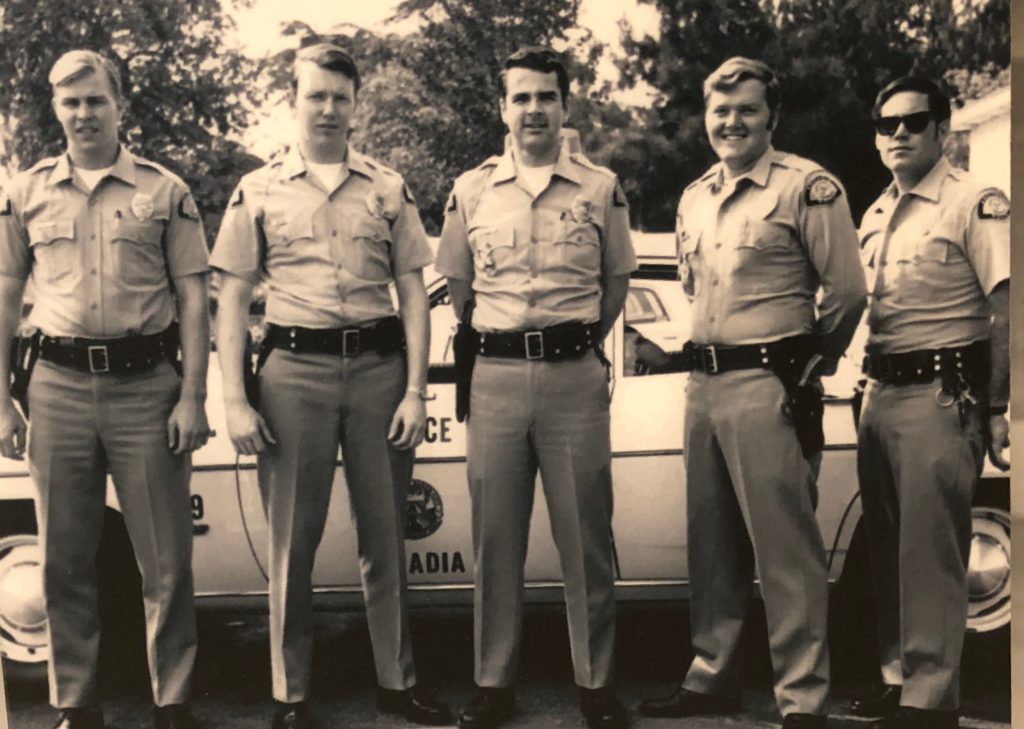
These reloads were often carried in small belt pouches that held the rounds under a snapped flap. There were varied styles, including pouches for loose rounds (similar to the “dump” pouches carried by uniformed police), pouches that held them arranged in pairs (like the “2x2x2” pouch that DeSantis invented at Jim Cirillo’s request), or pouches for Bianchi Speed Strips.
A lot of coppers—especially when they were off duty—resorted to tossing a Speed Strip in a pocket, too. Only a small minority of non-uniformed police carried one of the more efficient, but bulkier, speedloaders when they became popular. Those who did were either following policy, or smart enough to heed the lessons of the growing “officer survival” movement of the era. Like the Speed Strips, some of these larger loaders were carried in belt pouches, and some just wound up in pockets.
THE SHELLHAMMER SPECIAL
There was always a good possibility though, that the officer in soft clothes would have no spare ammunition at all. In order to fix this situation at his agency, a U.S. Secret Service officer by the name of Bill Shellhammer approached budding holster maker Gene DeSantis with an idea for a new holster in the mid-1970s. Just a few years out of college, DeSantis had already begun to form close relationships with the Secret Service and FBI, and his fledgling business had become a go-to source for lawman gunleather. Shellhammer figured that an ammo carrier should be part of the holster, to guarantee that an officer would have a reload available whenever he had his gun, so he proposed the idea to Gene, who created a special holster that he named after Bill.
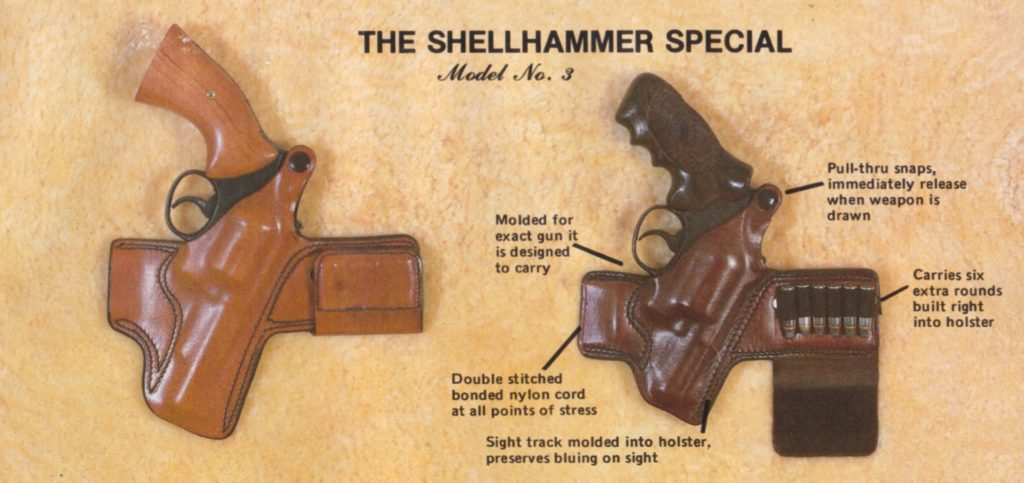
The heart of the Shellhammer Special was a strong side scabbard with an FBI cant and an exposed trigger guard (which wouldn’t be considered ideal today, but it was standard for the era). The pouch had a molded sight track to protect the front sight and prevent the blue from being worn off prematurely (which could cause some glare on the front sight). To retain the revolver, a pull-through snap was attached to a strap that surrounded the hammer. This strap would keep the gun in place until it was needed, at which point the agent would pop it open by drawing the gun through the breakaway snap.
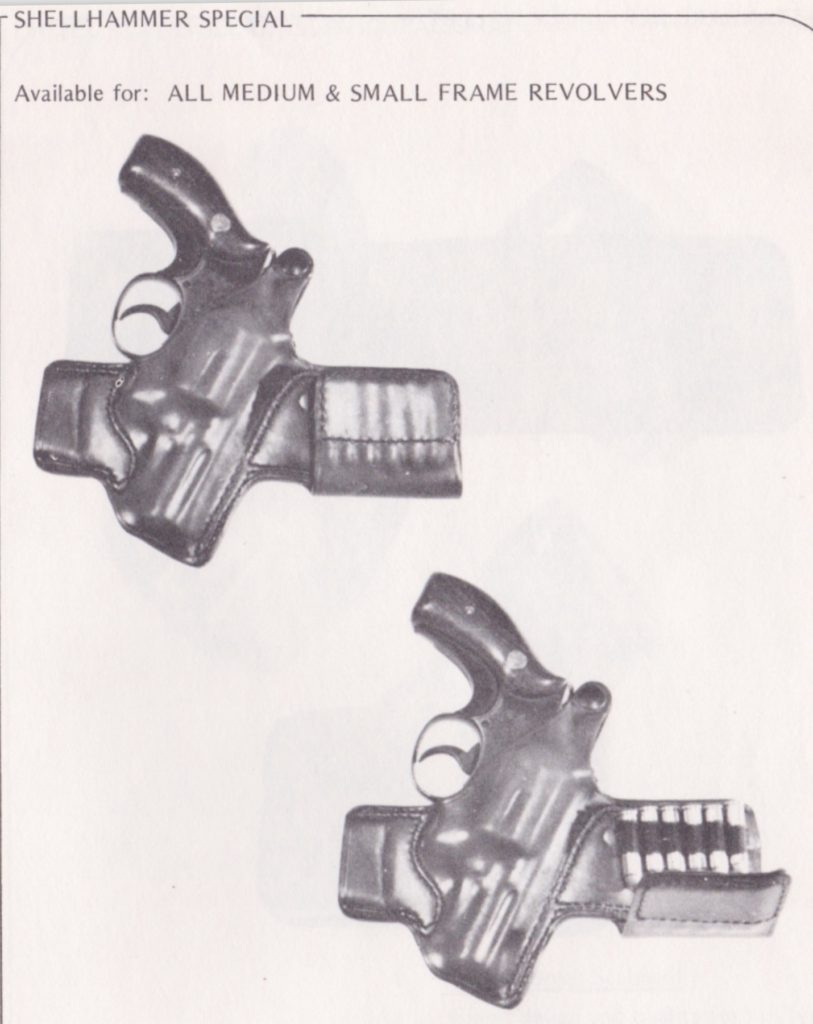
The aft wing of the scabbard created a hidden belt loop (those federal boys always have to look snazzy, you know) and the forward wing of the scabbard incorporated another one, to which a strip of loop Velcro was secured on the outside, in the shape of six cartridge loops. A leather flap with hook Velcro folded down from the bottom, and mated to the loop Velcro of the cartridge loops, providing retention and protection for the six rounds.
The Shellhammer Special was released in 1976 and retailed for $30 in the era of “odd and even days” at the gas station (ask your folks). Secret Service agents bought them for their 2.5” Model 19s, and FBI agents later bought them for their 3” Model 13s. Following their lead, agents from other organizations, such as the DEA, bought their own as well.
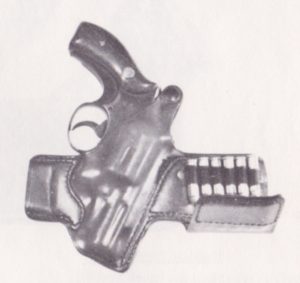
The Shellhammer Special, or style No. 3, wasn’t perfect. The loop Velcro didn’t hold the cartridges very tight—especially compared to leather—and the pull-through snap could jam up if it wasn’t regularly lubricated with graphite, but the novel concept of an incorporated ammo carrier, forward of the holster body, was a winner. The Shellhammer was well received by the agents who used it, but it’s most important contribution was to set the stage for an improved design that followed.
THE FLETC UNDERCOVER
In the early-1980s, the Federal Law Enforcement Training Center (FLETC, sometimes called “Flee-Tech” by students, and nowadays, “Flet-See”) requested a new training holster for its students. Winning a contract to supply the influential schoolhouse would not only be lucrative, it would also help to enhance a company’s reputation. As such, DeSantis quickly worked up a sample for the competition.
The DeSantis entry was a strong side scabbard that offered several improvements to the Shellhammer Special. The exposed trigger guard of the Shellhammer was now covered to enhance safety, and the troublesome pull-through snap was replaced with a reinforced thumb break which offered better security and speed. In a nod to the dress pants worn by many agents (which had narrow belt loops), the new holster incorporated an ability to size the holster’s belt slots for belts varying from 1” to 1.75” in width, by means of Chicago Screws that were inserted through holes near the belt slots.
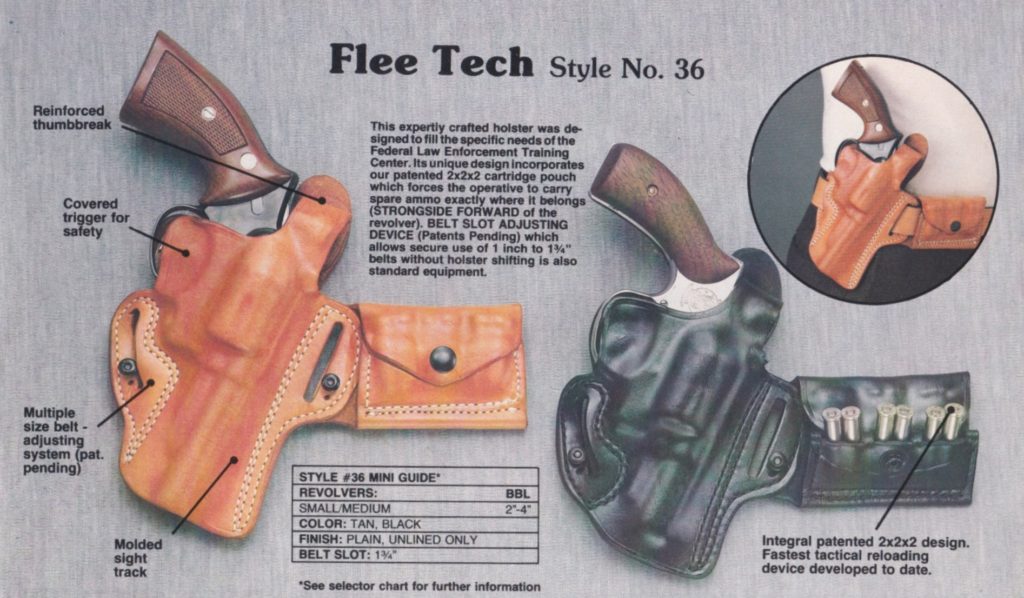
The holster also hearkened back to the great strength of the Shellhammer Special, with an incorporated ammo carrier, forward of the gun. This carrier was more robust and secure, however, consisting of a leather pouch with a snapped cover. When opened, the pouch presented the 6 rounds in 2x2x2 fashion, which was both faster and more secure than trying to pull rounds from individual loops.
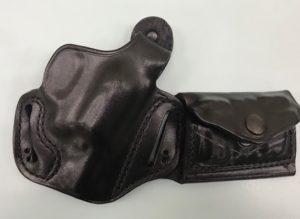
The DeSantis FLETC Undercover holster won the contract handily, and became the standard issue holster for FLETC trainees in the mid-80s. It was also catalogued for commercial sales by 1986 as style No. 36, or the “Flee-Tech” model. The nickname—wink, wink—was a clever marketing move that established the design’s bonafides without running afoul of the feds, who didn’t want to appear like they were giving product endorsements. Gene DeSantis had learned that lesson the hard way, years before, when the Secret Service had taken a dim view of him advertising the fact that he had made Uzi holsters for the first CAT Team, so “Flee-Tech” was as far as he could push the association.
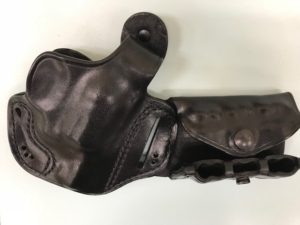
The biggest problem with the FLETC Undercover holster is that they kept disappearing. The students loved them so much that when they completed the academy, they often took them home, against the rules. The holsters had been stamped “Property of FLETC,” but the enterprising new agents found a way to smuggle them outside the wire, much to the staff’s dismay. The situation was a win for DeSantis though, because they continued to get new orders for replacements. In a desperate effort to put and end to the theft . . . um, acquisition of the favored holsters, the FLETC staff finally resorted to painting them bright yellow. The countermeasure worked, but the already-purloined holsters went on to provide great, if unauthorized, service in the field, and kept DeSantis busy filling orders from agents who appreciated the design and were actually willing to pay for it.
TIMES CHANGE
Time stands still for no man though, and the era of the revolver in American policing was soon coming to an end. By the time of the horrible 1986 shootout in Miami between FBI agents and a pair of highly motivated, military-trained bank robbers, the transition to autopistols by American police was well underway.
State and municipal agencies led the way, with early adopters like the Illinois State Police (S&W Model 39, circa 1967), New Jersey State Police (HK P7M8, 1983), and Connecticut State Police (Beretta 92F, 1983) paving the road ahead. The feds were late to the party, but the struggles endured by revolver-toting agents facing the .223 rifle-armed killer in Miami pushed them into authorizing semiautos for all agents (previously, only SWAT-trained agents could carry the S&W 459, of which 3 were used in the Miami shootout).
Soon, the revolvers faded away as frontline duty weapons, taking the FLETC Undercover holster with them.
RETURN OF A CLASSIC
The idea of mating an ammo carrier to a holster was too good to die though, and a few years back I started a conversation with DeSantis about bringing some new designs to market that would incorporate the concept. Honestly, I was ignorant of the previous Shellhammer and FLETC Undercover holsters when I suggested the idea to Gene, and was pleased to learn that this was already familiar territory for him. Gene agreed to start tinkering at his workbench, and we started a back and forth dialogue about the features that would make a good carry holster for the underserved RevolverGuy market.
Not surprisingly, the FLETC Undercover was the starting point for Gene’s work. The new holster, the FLETC 2.0, would build on the concept and introduce some product improvements for today’s wheelgunners.
IMPROVEMENTS
One of the first questions to answer was whether or not the thumb break should stay. As a police duty holster, the original FLETC Undercover had to have one, but would it be necessary to keep it on the new holster? We discussed the fact that revolvers are primarily carried today in a concealed fashion by armed citizens and off duty police, and since those audiences had long ago decided their preference for open top designs, it made sense to eliminate the thumb break. To aid in retention, a tension screw would be added to the pouch, in order to allow the holster to maintain the desired fit as the leather began to break in and relax.
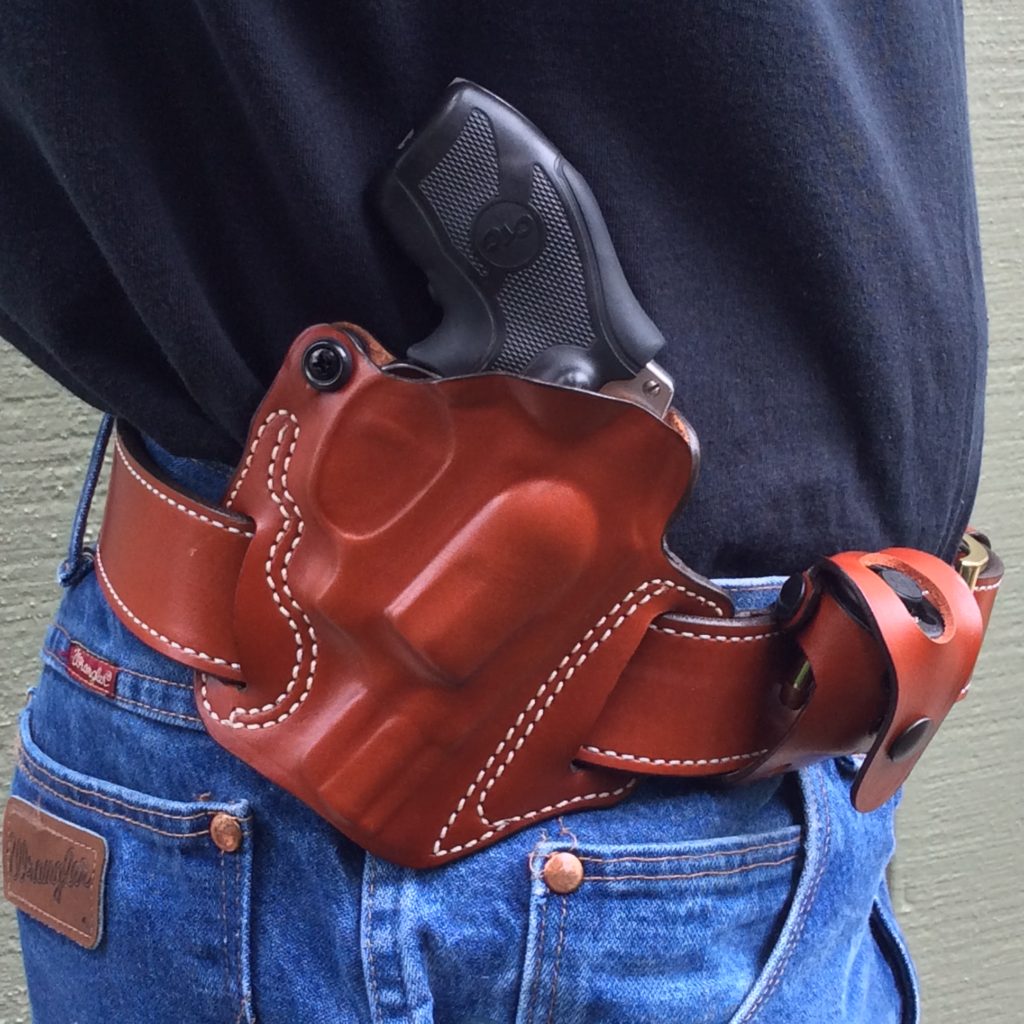
Positioning the tension screw required some experimentation. On some early prototypes, the tension screw rode a little too high on the backside of the trigger guard pocket, which could interfere with getting a solid firing grasp on the gun. I found that some grip designs which filled in the area between the front of the frame and the trigger guard made it hard to get a full grip because the tension screw restricted access. This wasn’t as much of a problem with grips that followed the lines of the frame closely (like the old “splinter” stocks), but was definitely an issue with “boot grip” and “presentation” or target-type designs.
DeSantis has improved this by relocating the tension screw. I still experienced a slight interference on the latest test version I had access to (my middle finger would bump the screw a bit, but I could still get a full grasp on the gun), but this should be fixed for production versions. Note that the marketing images for the FLETC 2.0 were shot using an early prototype and don’t accurately reflect the production model with the new screw location. Don’t be scared off by the ads—the production models offer better clearance to get a good firing grip at the start of your draw with the gun in the holster.
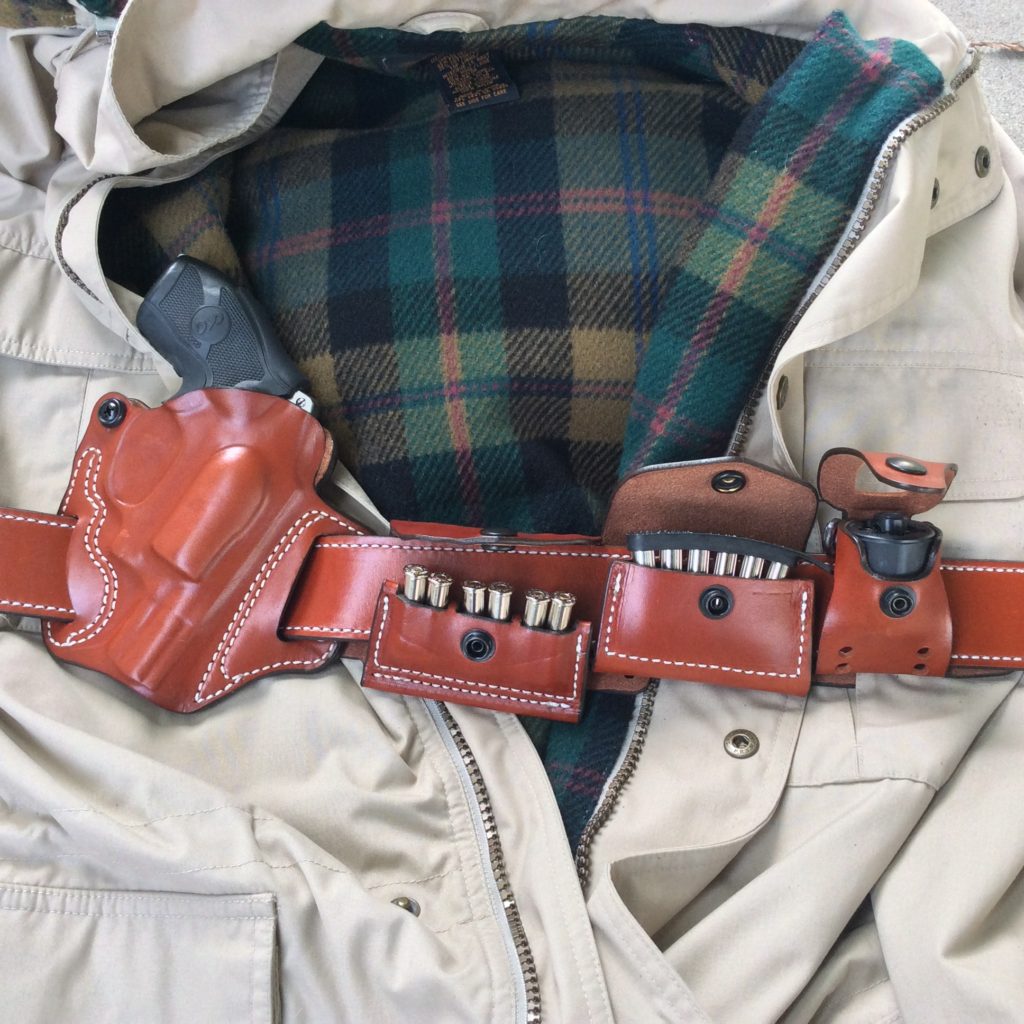
Another question to answer revolved around the ammo pouch—should it be a 2x2x2 pouch like the original, Gene asked, or a pouch for a loading strip, like the DeSantis Swift Strip? Since my loader preference leans towards speedloaders, I suggested that we should make the design modular, and give the user a choice of reloading tool.
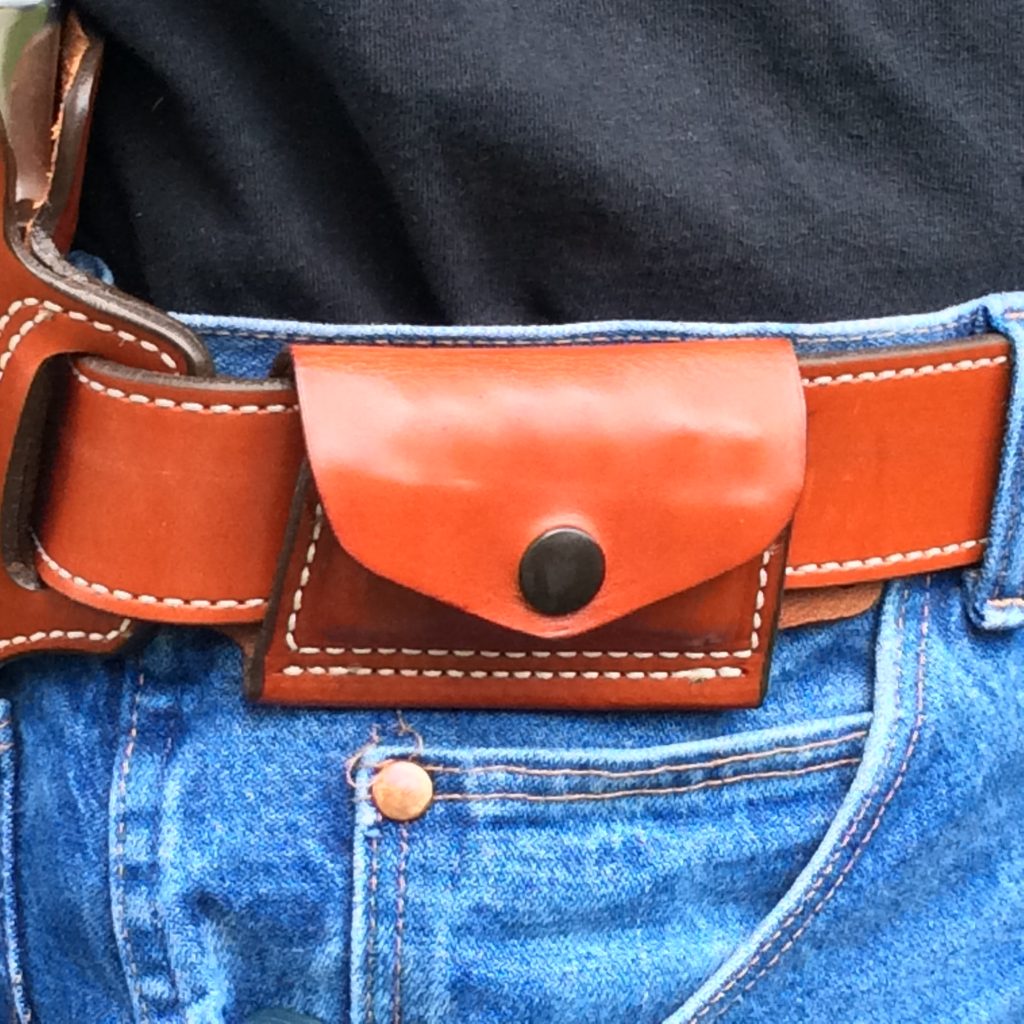
The 2x2x2 and strip pouches carry nice and flat, aiding concealment, but these reloading methods are slower than the speedloader. In comparison, the speedloader suffers the reverse fate—it’s faster to use, but more bulky and harder to conceal. Every RevolverGuy has to solve the dilemma for themselves, but the FLETC 2.0 will give them the option, because the holster can be purchased with any of the options, and the ammo carriers are easily replaceable at the shooter’s discretion. Just loosen a few screws, and you’re off to the races.
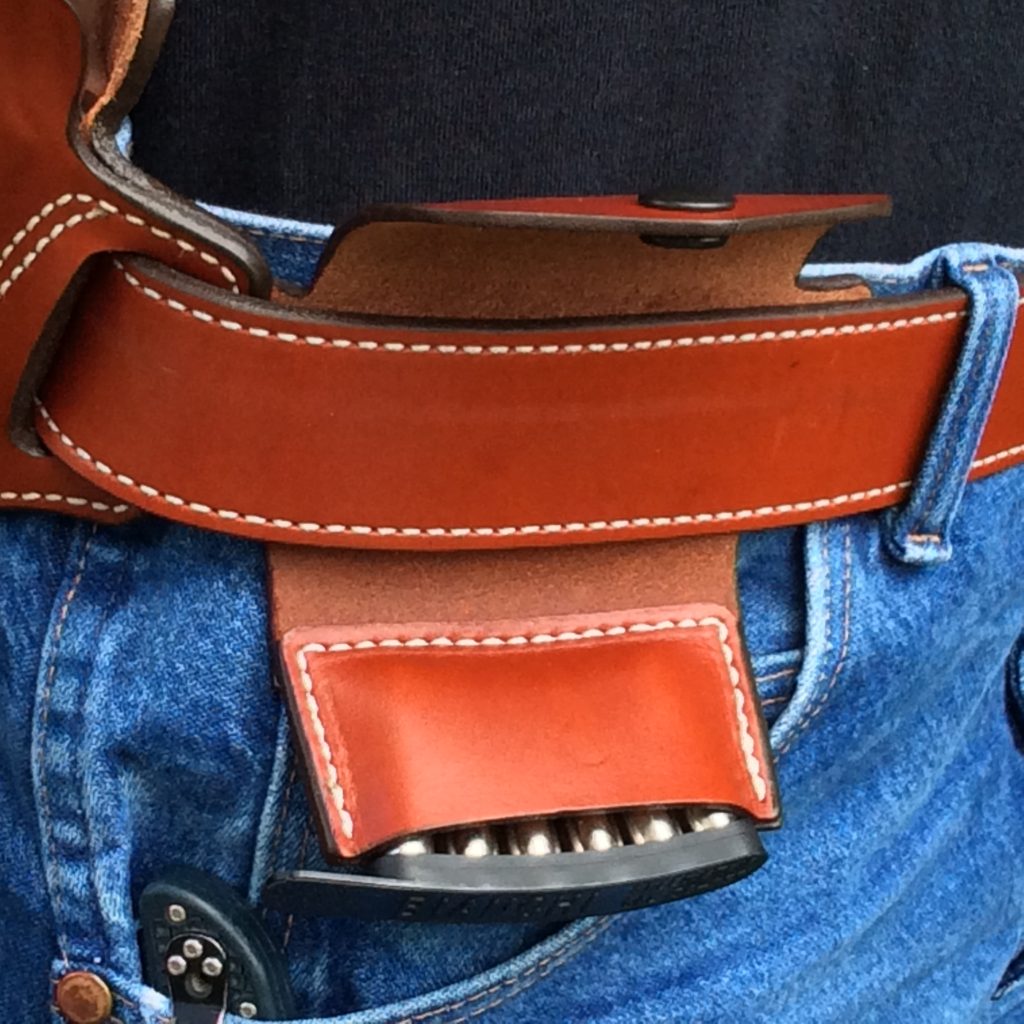
While we’re talking about the ammo carriers, I found that the hole in the flap of the prototype speedloader carrier was optimized for the HKS design, but didn’t work well for some other loaders with taller profiles. Loaders like the SL Variant and JetLoader have knobs which were too tall for the cutout in the flap to clear. So, with the help of a razor blade, we experimented with some modifications and eventually settled on a cut that would allow just about any loader out there to work. I personally played with HKS, SL Variant, JetLoader, Dade, and Safariland Comp I/II loaders in the updated speedloader pouch, and they all worked fine. I have no doubt that the similarly-sized 5-Star and Pachmayr designs will work, and suspect the Speed Beez will too. Once again, the rush to get marketing materials in place before the 2019 SHOT Show meant that some advertising and catalog images would show the prototype speedloader carrier, without the improved flap cut, but production versions will have the larger window.
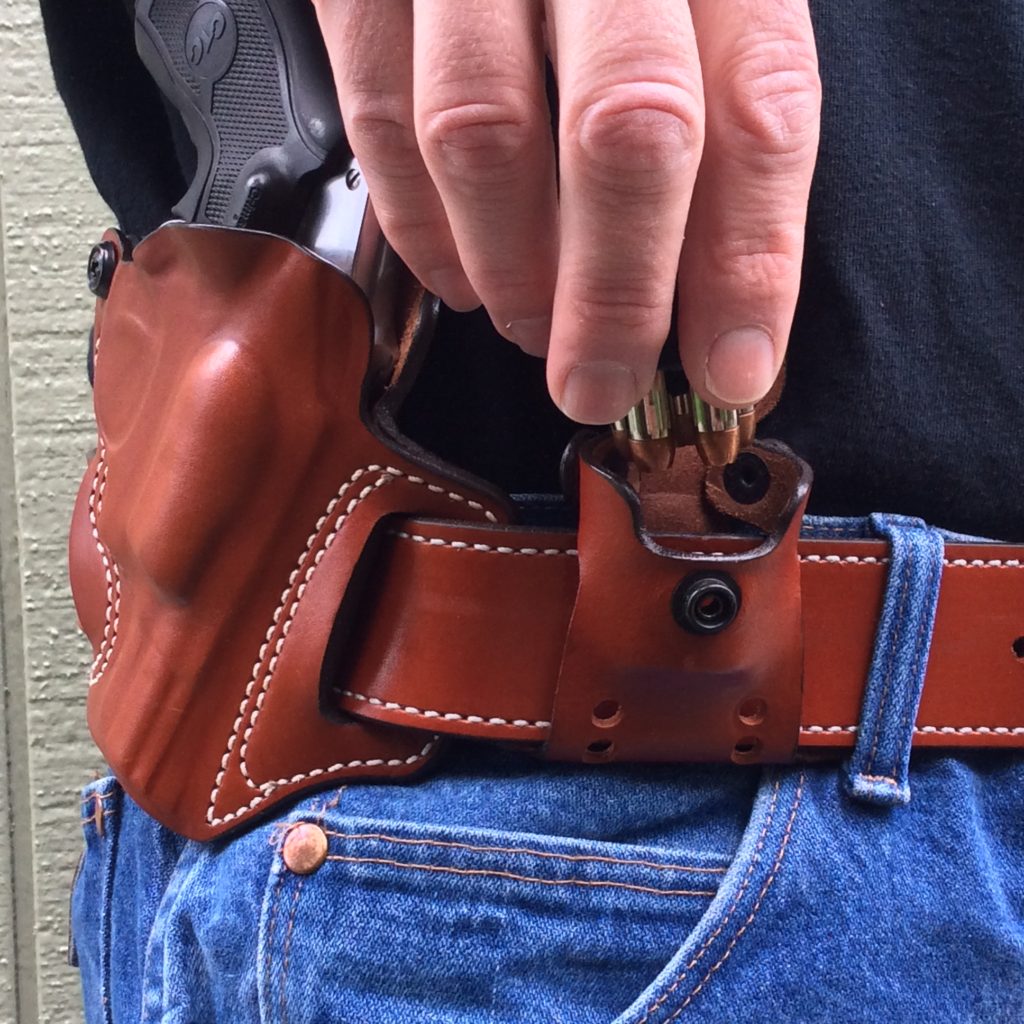
WEARING THE 2.0
At it’s core, the FLETC 2.0 is an open top, strong side scabbard with an FBI cant (a staple in the DeSantis lineup from the very beginning, as the No. 2, or Speed Scabbard). I’ve carried thumb break-equipped holsters similar to this for years, including on duty, but must admit that I have a strong preference for other designs. With my build, I find that I do better work with a neutral cant holster, and if I’m not restricted to strong side carry, I strongly prefer to carry in the appendix position. I find that for my body, the appendix position is more comfortable, more concealable, offers better security, and is faster on the draw than a strong side holster.
There’s a lot of individual preference involved in holster selection, and I don’t think that appendix is better for everyone, but it is for me. It’s important for you to understand my experience and preferences though, before I discuss carrying this holster.
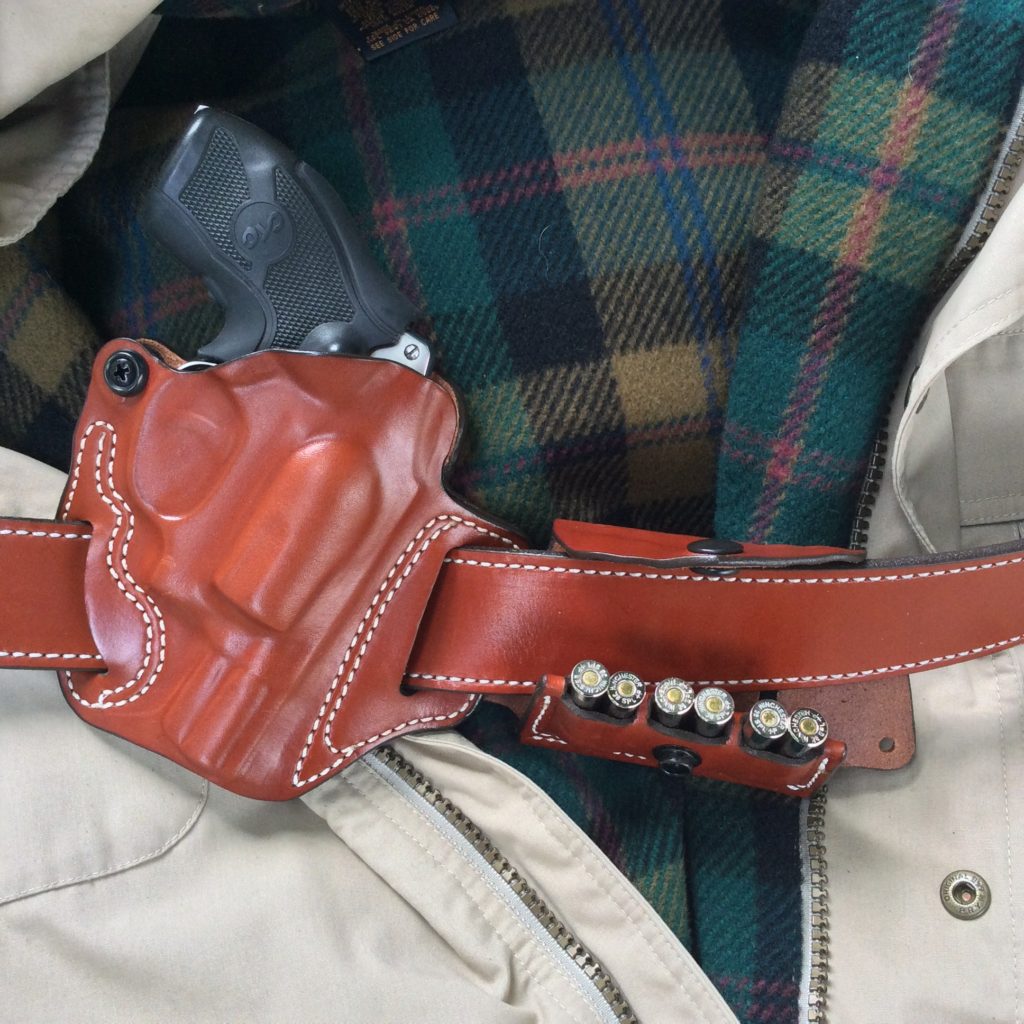
I found the FLETC 2.0 was as comfortable as any strong side scabbard I’ve worn. The FBI cant didn’t do much for my speed of draw, but it did carry the gun in a fashion that prevented the butt of the weapon from printing so much on my thin waistline (not braggin’, just sayin’).
The FLETC 2.0 offers a high ride, with the front of the cylinder on my J-Frame 640 riding above the lower edge of the belt, and the front of the trigger guard riding above the upper edge of the belt. The holster carried the gun tightly against my body and didn’t tilt away from my side. That’s largely because I had a good belt that fit the slots perfectly. If you use a sturdy belt like the 1.75” DeSantis style B09 Plain Lined Belt, you’ll be in good shape.
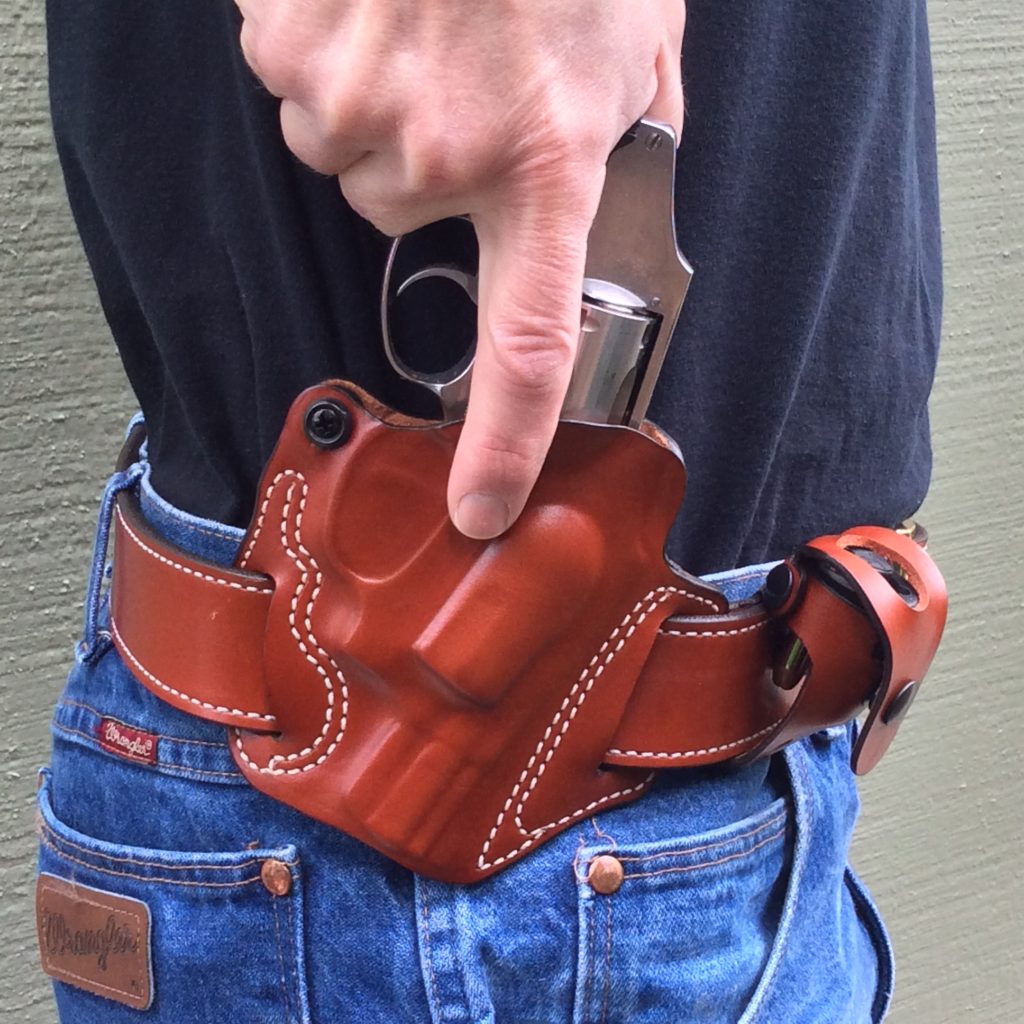
The excellent boning and tension screw combine to carry the gun securely. One feature of the Speed Scabbard that we’ve reported on previously is the hourglass-like boning around the cylinder. As the gun is inserted, the holster mouth bells out to funnel the gun into the pouch, but when the gun is fully seated, the pocket is pinched behind the rear of the cylinder to aid in retention. This isn’t a significant obstacle to overcome on the draw, but it does help to keep the gun in place for everyday activity, including running.
It takes a little more work to thread the FLETC 2.0 onto your belt with the attached ammo carrier, but breakaway snaps on the speedloader case simplify things for you, and the fold down nature of the 2x2x2 and strip carriers make it easy to get things out of the way for donning.
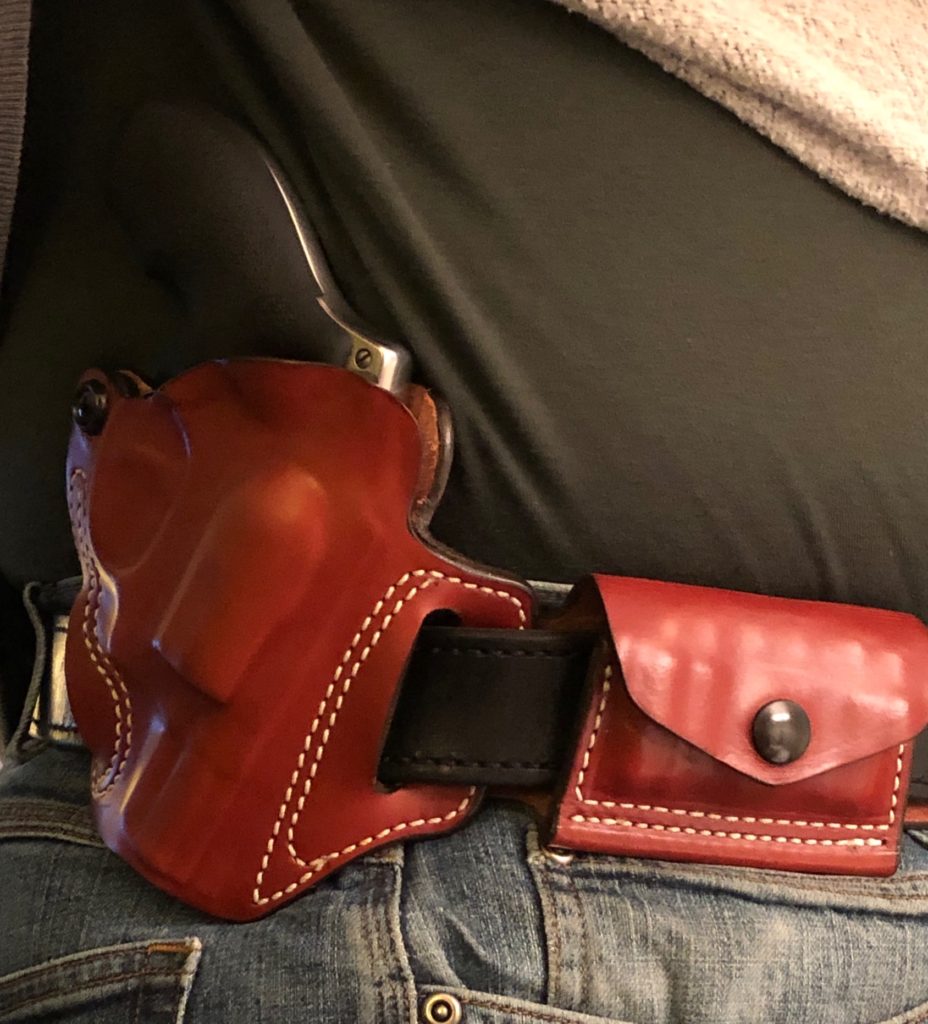
The speedloader pouch has adjustment holes and Chicago screws to tailor it for various belt widths, from 1.25”, to 1.5”, to 1.75”. This system was first used by DeSantis when they manufactured speedloader pouches for the NYPD’s newly-adopted HKS 10A loaders, which had to fit a variety of belt widths, from 1.75” garrison belts to 2.25” Sam Brownes. Incidentally, the NYPD adopted speedloaders after the death of Officer Scott Gadell, who was killed while trying to reload his revolver from an issued dump pouch.
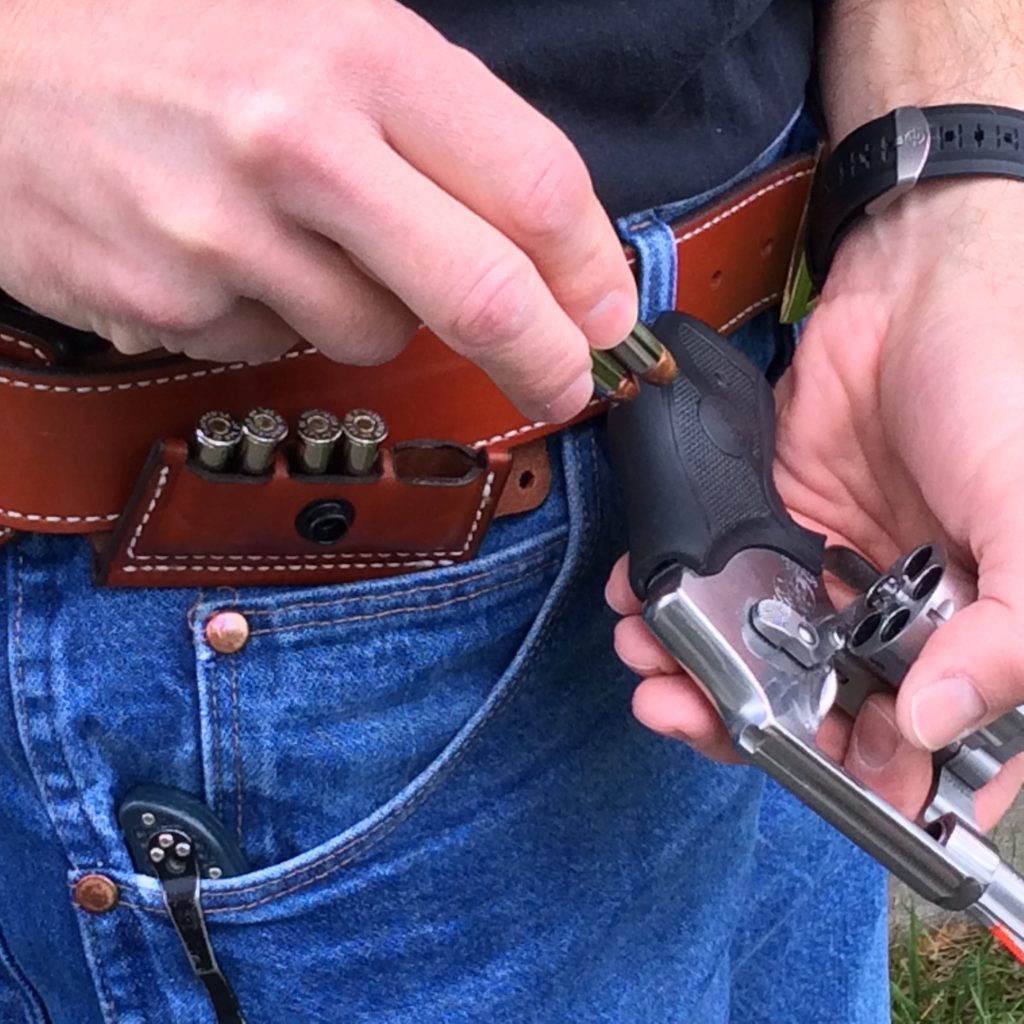
The 2x2x2 and strip carriers don’t need the adjustment holes and screws, as they accept a 1.75” belt behind the ammo pocket, and the rear of the pouches are cut with 1.25” slots to secure things for those wearing dress belts.
I mentioned my preference for the speedloader pouch, earlier. It’s easy for me to throw a flat strip loader in a pocket to supplement the FLETC 2.0’s carrier as desired, but not so easy to carry a speedloader in a pocket with comfort. So, I like to carry the speedloader on the belt. The 2.0’s speedloader pouch is only slightly larger than the other options, because it’s designed for the loader to straddle the belt in “Split Six” fashion. I found that it didn’t print any more than the firearm that I routinely carry in the appendix position. It made it really easy to carry the more effective loader.
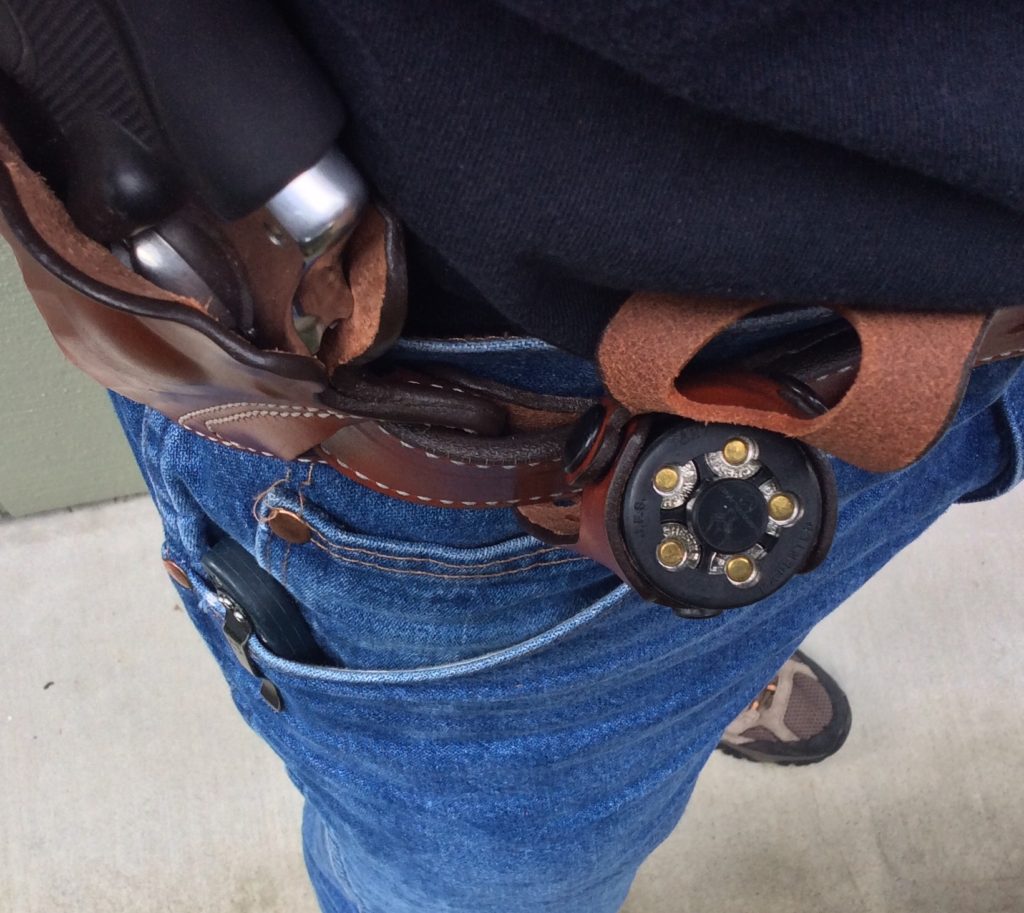
I’m not a big fan of flapped pouches for loaders and prefer an open top design, but the DeSantis pouch provides excellent security for the loader and with some practice, the snapped flap won’t be much of a hindrance on the clock.
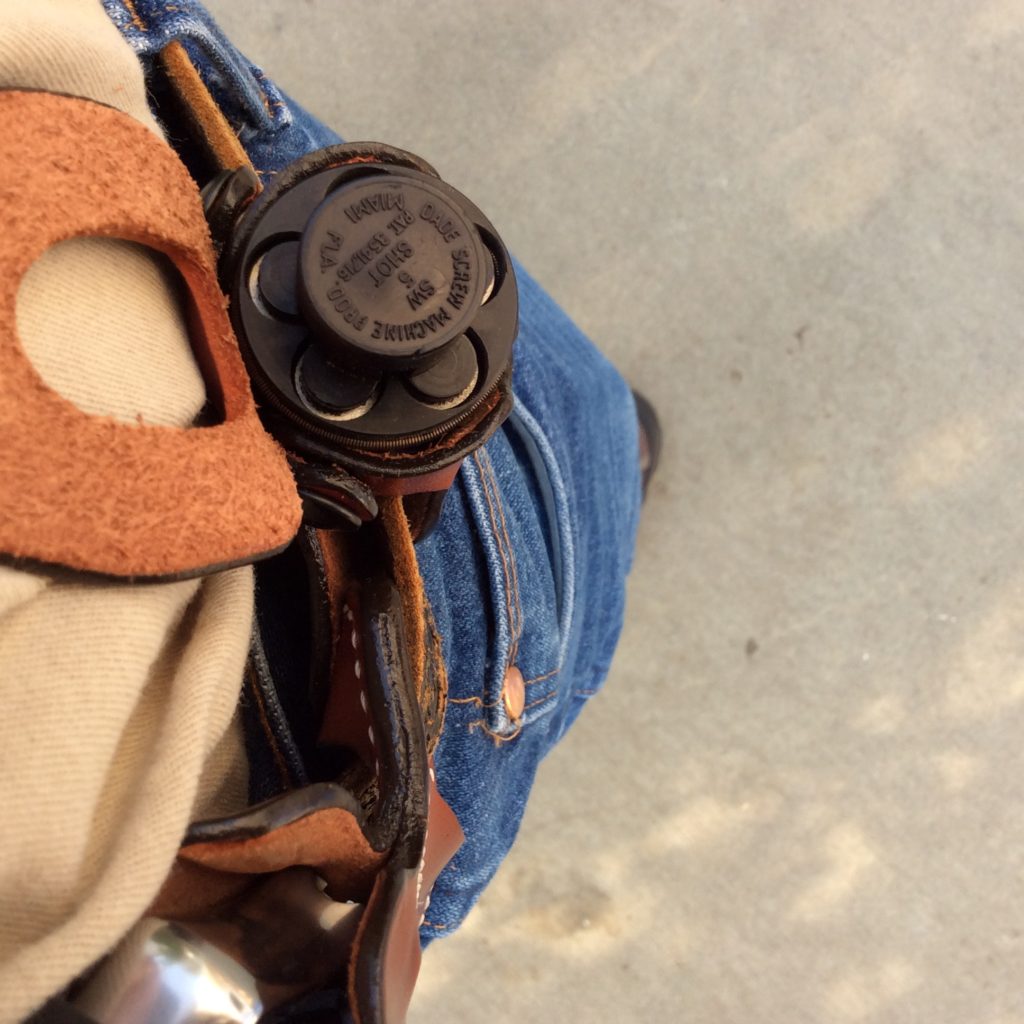
One additional note about the pouch—since it’s designed for the loader to straddle the belt, you might have some problems with push feed loaders that have a central release mechanism, like the Safariland Comps, SL Variant, or JetLoader. These have a tendency to discharge on their own in pouches where the release mechanism rides on the top edge of the belt. Fortunately, I found that these loaders could be carefully placed in front of the belt in the pouch. The pouch was slightly less concealable, but it worked fine.
GOOD TO GO
The DeSantis FLETC 2.0 is built with the same attention to quality that you’re used to seeing. The materials and workmanship are excellent, and the design is solid. If you’re a fan of strong side carry, and like a holster with an FBI cant, I think you’re going to love this one. With the FLETC 2.0, you’ll always have a reload for that wheelgun close by.
I think Bill Shellhammer would have approved, and if he were working the Presidential detail today with a wheelgun, I have no doubt it would be carried in a FLETC 2.0.

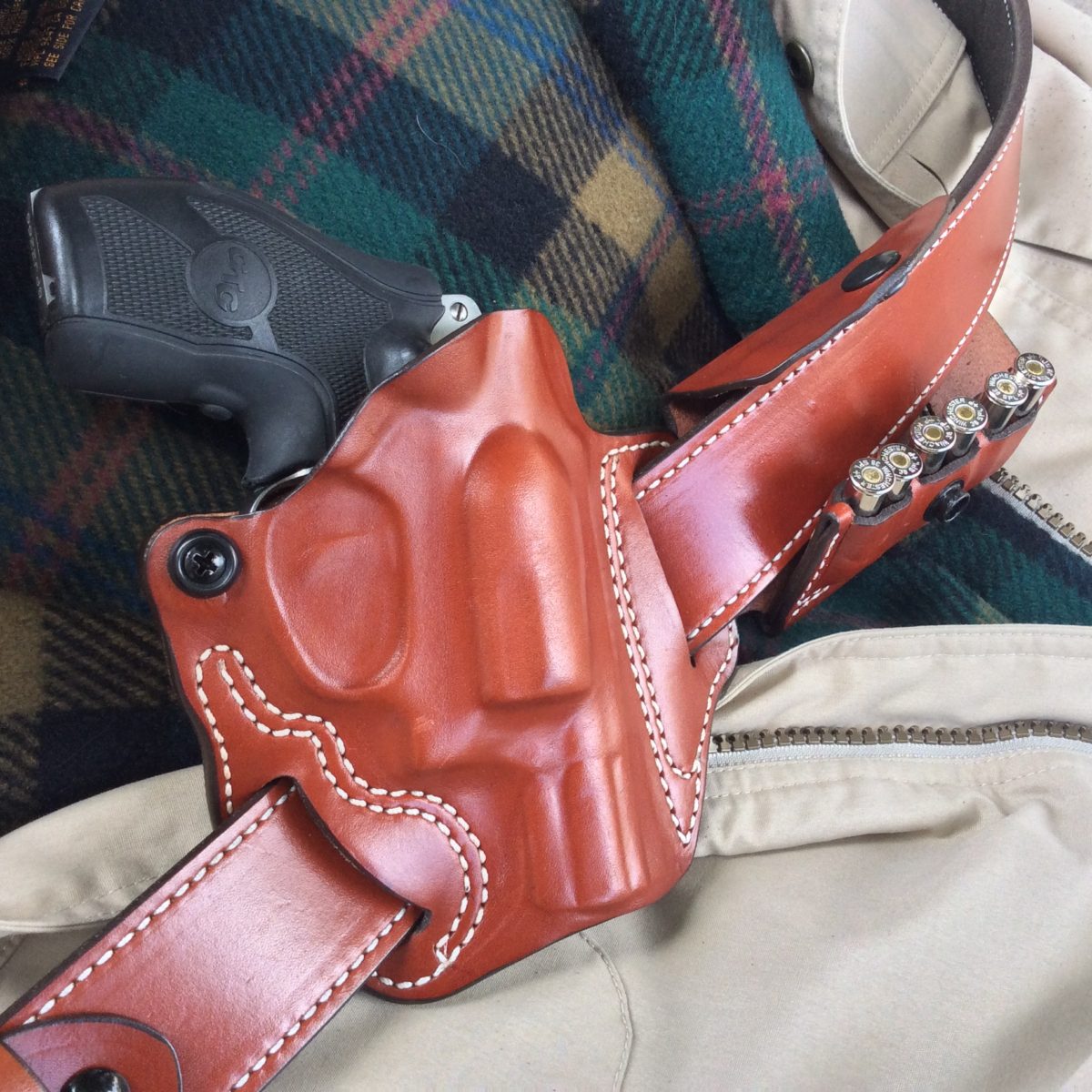
Nice write up Mike. Nothing goes better with a morning coffee than fine leather and revolver talk. I’ve always preferred strong side carry for everything. It’s difficult these days to find well designed, good quality revolver leather off the shelf. I’m intrigued with the 2x2x2 pouch. I know you have done a review here in the past, so it might bear a look back. The “history” angle is always an enjoyable twist on the reviews. Not only does it provide a lesson in evolving tactics, but the fact that photographs exist makes me feel 30 years younger!
You’re not fooling me, buddy. I know you just like leather because the creaks hide the noises from your back and knees! ; ^ )
Thanks, Mike. I really like this rig. I tend to carry my guns in town in the pocket or, for the farm, OWB in a flap holster to protect them from debris.
But I can come up with a use case for it…Hard to have too many holsters!
Sadly, I have boxes full to prove it! Glad you enjoyed the article. Gene makes quality leather gear.
Fascinating history thanks! I will probably pick one up, as I’m pleased with the DeSantis I currently have in rotation… I would prefer a snap for retention due to my own paranoia (version 2.1?) and could also picture an additional ammo carrier BEHIND the holster- I carry a lot of ammunition. I guess because I’m from Oakland. Or a little crazy.
Ha! Oakland and crazy go together like honey and biscuits! If you wanted, you could buy one of the standalone pouches for behind the holster.
Gene and I talked about a thumb break version. My thought was that it would be essential to chase the LE market, but since there’s so few places where a revolver would be chosen (and authorized) for primary use, it made more sense to go without, at first. I suggested offering it as an option later, if the base 2.0 model sold well, but before Gene does that, I hope he will make the AIWB version that I requested at the start of all this!
I had noted that the pouches have holes on either side (I am assuming to accommodate the left- and right- handed versions of the holster), but does the holster have the corresponding holes on both loops. It’s not too hard to punch a couple holes, but I’m just curious if that is already in place or would require a user modification.
Sorry, there are no mounting holes on the trailing edge of the holster.
Yup, crazy Oakland all right! Like me, a lotta cops get to carry round guns off duty, and might like the snap too. And yes, I do have stand alone pouches. The more vertical cant is a good idea too.
I totally get it, and I’ll pass it along. I hope this will be the next product extension on this holster. It would be an easy thing to do, since they already do strong side scabbards with thumb breaks.
I had no idea of RG’s involvement in this holster! I nearly bought one a couple months back to carry my 642 through a close protection course, but had just purchased another setup minutes before discovering this one! It would have been perfect.
I ended up with a bianchi thumb break holster and desantis split six pouch. I set it up in the opposite direction, like Riley described, but with just the one one pouch behind the holster, because the instructor encouraged us to carry our firearms in appendix position just behind the opening of our sports coats. Unlike Mike, I actually found it more comfortable to carry on the strong side and did so for the remaining four days of class. So, the FLETC 2.0 would probably be ideal for me. However, I may hold off for that AIWB version to materialize.
Wondering it this model is available for a variety of revawvers, or only J-frame size? I’m partial to my .44 GP100, and this model would save me hassle in the spare ammo department–besides the fact it really looks good (which doesn’t matter for Concealed Carry, but what about those time I’d like to show off a bit for the other ORF’s?).
I also like the thought of a speed loader in front, and a strip pouch behind, which with my non-Adonis build and one-size-larger shirt method, would still hide just fine.
Once again, a great article, and another thing to dip into my wallet. Thanks, Mike! Ace
Ace, unfortunately it looks like the only Ruger they’re currently offering a fit for is the LCR. I agree this would be a neat rig for the .44 Spl GP100! I’d suggest dropping them an email at customer service about that, and I’ll tell Gene directly as well. Always glad to see you here at RG!
As usual Mike, a superbly researched and written article that is a ton of fun to read. And the photos do exactly what they’re supposed to do, supplement the writing and present themselves in a very appealing manner Super great photos, it’s like I can reach right out and draw those revolvers myself!
Thank you! That’s high praise coming from you, my friend!
Excellent article. I am now looking for a new holster for my 4.2″ barreled revolver, but not getting much assistance from a couple of major holstermakers. I will call DeSantis, and see what he has to offer.
I like the idea of 2x2x2 except I have a 7-hole 686, so I use the HKS, as the SLVs are unobtanium. The second-six holder seems great to me. I also am mixed about pancake construction. They always distort the belt and if made of stiff leather feel like a brick. I too wonder how you conceal this rig. Unless you wear suit jackets or coats all the time it seems quite evident to me.
I’ve got a friend who made this his primary carry holster and it’s working nicely for him under casual clothes—no suit jacket required. The thing about holsters is that they’re very personal choices—what works great for me might be horrible for you, and vice versa. That’s what keeps so many different companies in business, with so many different variations!
I bet Sam Andrews would make you a custom 2x2x2x2 (one extra round, in case you drop one) pouch if you wanted one. He can do anything with leather. http://www.andrewsleather.com/
I just received this holster from Midway for my new Taurus 856 UL. I bought the model designed for the J-Frame/Taurus 85 2-inch. It fits great and I like the cant and the way it holds the butt of the revolver in high and tight. I also like the 2x2x2 pouch. I’m a fan of strong side OWB carry and having a reload readily accessible. This setup is a fantastic option for me. Nice history of this design and review!
Will the FLETC 2.0 fit the Taurus 856 six shot revolver?
Jason, you’ll want to call their customer service and ask them. They only list the 85 and 850 as Taurus fits. It’s possible the Kimber K6s model would be big enough for the cylinder, but the boning would not match the barrel, frame, and trigger guard profile on the Taurus. A J-Frame or 85-sized version would probably be too tight for the 856 cylinder.
I realize this is an older article, but still very relevant. I was just looking to buy this holster for my new 640 pro and this was full of great information. I had no idea of the history behind it. I have a similar DeSantis holster with a snap closure I use for my SP101 that I am really happy with. Thanks for the great write up.
Glad you found us, Darrell! Pull up a chair and stay for a while. Lots of good stuff in these pages.